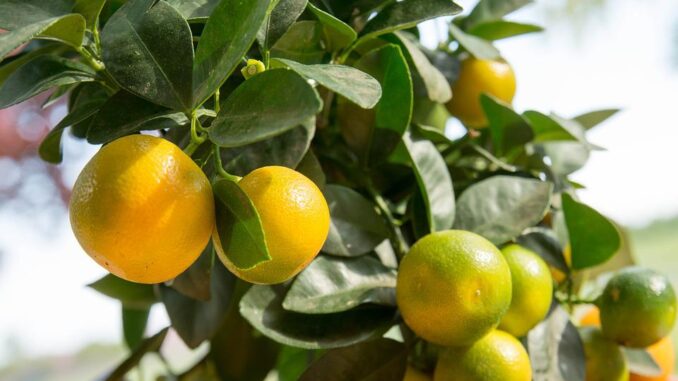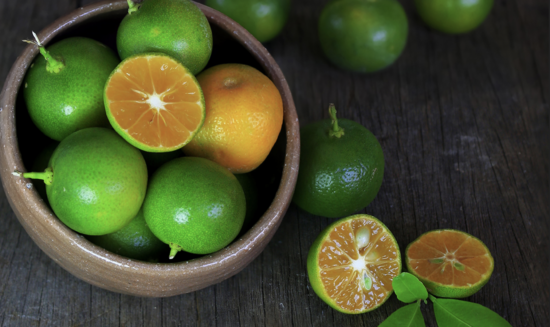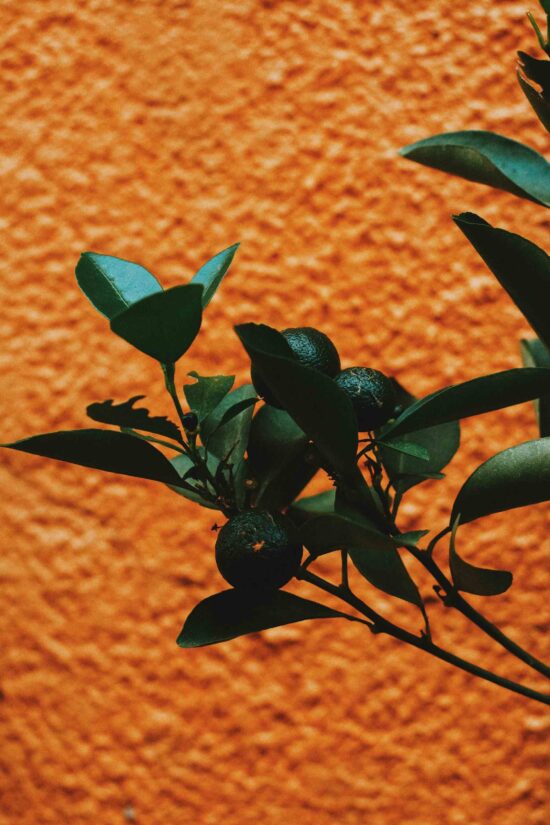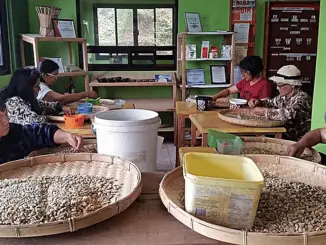
Bright, tart, and slightly sweet, calamansi is the lemon of Southeast Asia, and it adds a unique and flavorful touch to any coffee or tea beverage
BY EMILY MENESES
SENIOR ONLINE CORRESPONDENT
Cover photo by Michael Matera via Pixabay
You’ve heard of lemon, you’ve heard of lime—but have you heard of calamansi? Primarily grown in the Philippines, calamansi is a natural hybrid between the kumquat and the mandarin orange, and is the result of cross-pollination. This small, round, green-and-orange-colored fruit has a bright, sour, and slightly sweet flavor, and is popularly used in food, beverages, and as a garnish throughout Southeast Asia.
Lately, you may have seen calamansi popping up on café menus in the Western world, in the form of an ingredient to complement espresso tonics, spritzers, iced teas, and more. If you’re curious about calamansi and all of the ways you can incorporate this tart citrus fruit into your favorite coffee and tea beverages, here’s all you need to know.

The origins of calamansi
Calamansi, along with all other citrus fruit trees, was found to originate from one place: the Himalayan mountains. Over time, people began transporting and planting citrus trees around the world, until they eventually arrived in the Philippines.
Calamansi is also referred to as Philippine lime, Philippine lemon, golden lime, or Panama orange. The plant is relatively easy to care for and thrives in warm, tropical climates similar to those of its Southeast Asian origins. Like other forms of citrus, the fruit is rich in vitamin C and helps boost immunity. It’s also rich in vitamin A, potassium, and calcium.
Calamansi in food and beverage
In Philippine cuisine, calamansi is typically used to add a touch of brightness to soy sauce marinades, arroz caldo (chicken and rice porridge), pancit (noodles), and more. It’s also popularly consumed as an iced tea, combined with honey and ginger. Overall, the fruit is used in ways similar to how lemon and lime are used in cuisines throughout the world.
Today, you can find calamansi in coffee and tea beverages around the world. For example, Los Angeles-based Café 86 offers a refreshing dragonberry calamansi cooler, sweetened with dragon fruit syrup and topped with dried strawberries.

Where to find calamansi
Even if you don’t live in Southeast Asia, you can find calamansi at most Filipino or Asian supermarkets. If you live in a warm climate, it’s also fairly easy to grow the fruit yourself. Calamansi trees take about three to five years to mature, and they thrive when exposed to at least six hours of sunlight everyday. Click here to learn more about growing this incredible plant at home!

Recipe: Calamansi Cold Brew
Calamansi provides an easy way to add a unique touch of brightness and flavor to any coffee or tea beverage. Try out this easy cold-brew recipe to delve into the world of this tasty citrus fruit.
Ingredients
2 oz. calamansi juice
2 oz. simple syrup
10 oz. cold brew
In a cocktail shaker or Mason jar, add all of the ingredients along with a few cubes of ice. Shake until all ingredients are combined and serve over ice. Optional: Garnish with mint or a slice of calamansi.
ABOUT THE AUTHOR
Based in Los Angeles, Emily Joy Meneses (she/her) is a writer and musician passionate about culture and collective care. You can regularly find her at Echo Park Lake, drinking a cortado and journaling about astrology, art, Animal Crossing, and her dreams. Explore her poetry, short stories, and soundscapes on her website.




